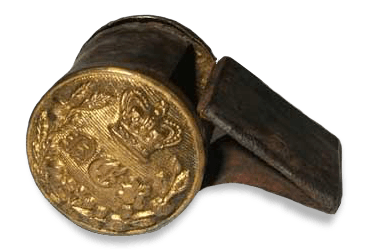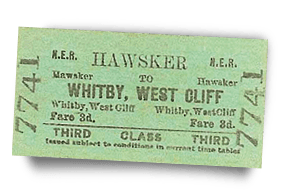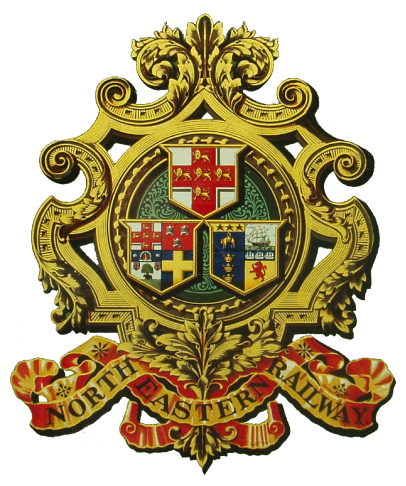
If audio does not start automatically please press the play button to start.

The Maps
The directors of the North Eastern Railway, meeting in 1900, authorised their General Manager, George Stegmann Gibb, to erect large maps of the company’s passenger network at several of their stations. They were to be constructed of sixty four 8” x 8” glazed tiles, with a further eight 8” x 4” ones spelling out the company name at the top. Lines over which they had running rights were included, as were large scale map tiles showing the docks owned by the NER.
The tiles were to be made by Craven Dunnill & Co Ltd. of Jackfield in Shropshire.
The result was a very beautiful tile map, which showed the entire NER system, as well as a few lines belonging to other companies. Most of their own passenger lines were shown, as well as some nearby features such as lakes, lochs, country houses and their parkland, battlefields, castles, abbeys, monasteries and cathedrals. Very attractive, but simple, colouring was used. What is immediately apparent when first looking at an NER tiled map is the sheer size of the Company’s network. Stretching from Berwick to almost Rotherham, and Carlisle to Withernsea, it is easy to see why this was once the world’s largest railway company.
The first map to be erected is now thought to have been that at York Station although one at Kings Cross followed quickly, not, of course, one of the Companies’ own stations, and 160 miles south of the start of the NER territory!
The Manufacturers
Hargreaves, Craven and Dunnill Company had built a new factory at Jackfield, in the Ironbridge Gorge, in 1874, spurred on by their dynamic managing partner, Henry Dunnill, who had joined the firm of Hargreaves and Craven a few years before. The Jackfield Encaustic Tile Works was designed to use an early form of production line technology, and even incorporated an impressive showroom above the Gothic works entrance.
Henry Powell Dunnill was born in Wakefield in 1821 and moved to the Jackfield tile producing area in 1867. His first impressions of the area, as he passed through it on the newly opened Severn Valley Railway, were not good. He later recalled thinking “Heaven preserve me from having to live in such a forsaken place as that”! This probably goes some way towards explaining why he displayed a great social conscience, starting an early profit sharing scheme at the tile works, and helping to open a Reading Room, YMCA and Working Men’s Clubs. He lobbied successfully for better water supplies, lighting, roads, railways and cemeteries in the area. He died in 1895, sadly before the NER maps were made, and the Shrewsbury Chronicle obituary described him as “...one of the most popular gentlemen in Wenlock.... of strong views but gifted with all the genial qualities which endear a man to those who admire study and robust character.”
Tile Makers to the World
Craven and Dunnill thrived. Whilst not the largest tile manufacturer in the area, they had achieved worldwide fame by the end of the century, their products recognised as early as 1877 with a contract to tile the floors of the Arts and Industries building in Washington DC, USA in 1877 and Palace Chambers, the government offices opposite the Houses of Parliament, by the end of the decade. And yet the works was so efficient that by 1881 it still only employed 95 people. Even by 1900 there were only 8 tile decorators and 4 tile glazers.
By the start of the 20th century the company’s tiles were used by churches, businesses, corporations, and institutions throughout the land. The Great Western Railway was buying their products for stations and refreshment rooms, and they must have been the obvious choice for the NER’s new project in 1900.
Want to find out more?
Call 01751 477 216
Map making, errors and all...
The NER map tiles were made using the traditional transfer system to achieve the consistent accuracy needed, but at a reasonable cost. Even so, most of the maps showed some variation. Mistakes – and there were plenty – were sometimes corrected on later maps, but often not.
Bamburgh and Felixkirk were always misspelt. Marston Moor was initially plain Marston. Knottingley didn’t exist on some maps, was painted in on others and was part of the transfer latterly. The railway layout at Malton is wrong, on most of the maps the North Holderness Light Railway is shown, although it was never built, and some of the early maps show a station on this line that was never even planned. There are many, many more mistakes and we decided at an early stage that the new maps should include them.
What's left
At least 25 maps were displayed at stations , the last, it is believed, by 1910. A contemporary author, G.W.J. Potter, wrote that they were a “striking improvement” and that the idea had “attracted considerable attention, and its adoption has much to recommend it – being easily cleaned, very legible, practically everlasting......” Pretty prophetic stuff, because a century later 12 tile maps still exist, 9 of them at their original stations - those at Beverley, Hartlepool, Middlesbrough, Morpeth, Saltburn, Scarborough, Tynemouth, York and Whitby.
There were some narrow escapes, though. The Middlesbrough map had been covered over by the time that the station was bombed in 1942. The example at the soon to be demolished South Shields station was saved by the heroic efforts of volunteers who removed the map along with the wall behind it for display in South Shields museum. The original map from Kings Cross station, carefully removed after many years of being covered over, was sent first to Clapham Transport Museum and later to the National Railway Museum, where it is strikingly mounted in the Station Hall entrance.
But there were also some unlucky losses: the map at Hexham was destroyed by an ardent Station Foreman trying to clean posters off it with a scraper, Bridlington’s was smashed by the station demolition contractors as local NERA members struggled to save it, and that at Tyne Dock was wrecked by arsonists just as BR had agreed to let two local preservationists move it to safety. The other lost maps were at Alnmouth, Darlington, Durham, Goole, Hull Paragon, Leeds City South, Malton, Newcastle Central, Normanton and Selby.
Decline & Rebirth
By the start of the 1950’s tile making at Jackfield was dead. Cheap foreign tiles had killed the home industry, and Craven Dunnill turned to retailing. The factory was abandoned and put to other uses. Yet the building survived, and was reopened in stages from 1984 by the Ironbridge Gorge Museum Trust as a tile museum. By 1989 a demonstration tile works was established there, and in 2001 Craven Dunnill agreed to restart limited production of handmade tiles at Jackfield. The wheel has turned full circle with the North Eastern Tile Company having commissioned them to restart production of NER tiled maps in 2007, using original methods and in their original factory.
